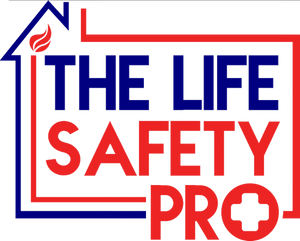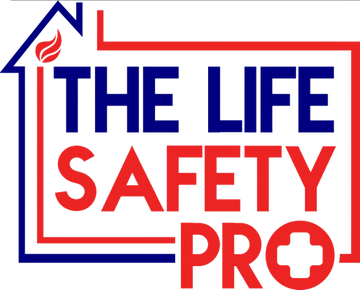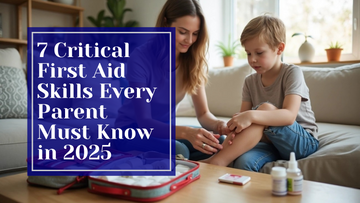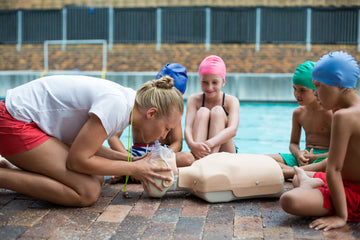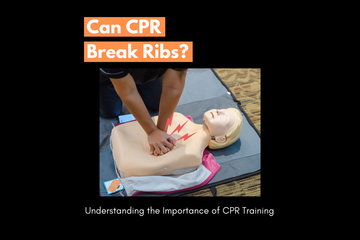How to Use an AED on a Baby: A Life-Saving Guide for Parents and Caregivers
by Jeremy Manke on Aug 03, 2025
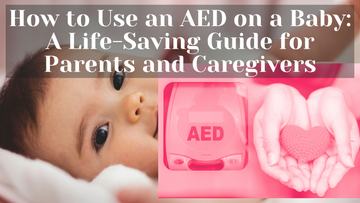
How to Use an AED on a Baby: A Life-Saving Guide for Parents and Caregivers

If a baby's heart stops beating, every second counts. That’s why knowing how to use an Automated External Defibrillator (AED) could save their life. In this guide, we’ll walk you through the basics of using an AED on an infant in a way that’s clear, calm, and easy to remember. For reference, before we begin, we will consider a child from birth to the Age of 1 as a baby.
✨ Why AEDs Matter for Babies
Cardiac arrest in babies is rare—but when it happens, it’s usually because they’ve stopped breathing. That can be caused by choking, illness, or injury. Once the heart stops, you only have a short window to act.
AEDs are safe for infants. These machines check the heart’s rhythm and give a shock if it’s needed. When they are used, they are looking for a heart rhythm causing an electrical problem. Using one quickly can give your baby a second chance at life.
🚫 How to Know If a Baby Needs Help
Here are signs a baby may need CPR and an AED:
-
They don’t move or respond to your voice
-
They aren’t breathing or are only gasping
-
Their skin looks blue or very pale
-
They don’t cry or show normal signs of life
If you see these signs:
-
Call 911 (or have someone else call)
-
Start CPR if you’re alone and didn’t see the baby become unresponsive. Do this for 2 minutes, then get an AED if available.
-
If you’re with someone, have them call 911 and get the AED and First Aid Kit while you start CPR.
How to Use an AED on a Baby

Don’t worry if you’ve never used one—AEDs talk to you and guide you through the process.
Step-by-Step:
-
Turn on the AED. Some turn on when you open the lid, and others have a power button.
-
Undress the baby. Wipe their chest and back dry if needed.
-
Place the pads correctly:
-
The front pad goes in the center of the chest.
-
The back pad goes between the shoulder blades.
- When your doing this, think about the heart. The goal of the AED is to have the pads make a connection through the heart.
-
-
Let the AED check the heart. Don’t touch the baby while it analyzes. The machine will tell you to stand clear while it's analyzing.
-
If it says “shock advised,” say “Clear!” and press the shock button. If the AED is an Automatic AED, it will prepare the charge and shock automatically after warning you.
-
Start CPR again. Do 30 compressions and 2 breaths using 2 fingers or 2 thumbs in a circular technique. Repeat until help arrives. The AED will pause every 2 minutes to recheck the heart rhythm. At this point, stop compressions and let someone else provide compressions for the next 2 minutes, if available.
What If You Only Have Adult AED Pads?
That’s okay. Use them anyway.
-
Put one pad on the chest and one on the back.
-
Make sure the pads don’t touch.
Even though they’re not perfect for infants, adult pads are better than doing nothing. Research shows it’s safe, and it could save the baby’s life. It's just more energy than their heart needs.
📆 Get Prepared Before an Emergency Happens
Here’s how to get ready:
-
Take a CPR and AED class that covers infants. Here at www.thelifesafetypro.com we offer training for small groups and even in-home training.
-
Know where the nearest AED is (at home, daycare, sports field)
-
Keep a first aid kit and baby CPR guide nearby. If you want an easy to use First Aid Kit with the supplies you need and a Step by Step CPR Guide, Check out our Children's First Aid Kit.
-
Talk with babysitters and family so they know what to do too!
🙏 Final Thoughts
Knowing how to use an AED on a baby may feel overwhelming, but it doesn’t have to be. AEDs are built to help everyday people save lives. You need to stay calm, follow the prompts, and act fast.
Being prepared isn’t about expecting something bad to happen—it’s about being brave enough to care, to learn, and to be ready when it matters most.
That’s what it means to be a Life Safety Pro.
Written by Jeremy Manke, a firefighter and paramedic with over 20 years of experience in emergency services. Jeremy is the founder of The Life Safety Pro, a business dedicated to child safety and CPR education for parents and caregivers.
References
- https://nhcps.com/lesson/bls-automated-external-defibrillator-aed-infants-children/?srsltid=AfmBOopgejS6ZT4_awFBB7UX15q6cUEORHCpyDEOarvf-Nir8adct014
- https://www.ahajournals.org/doi/10.1161/01.cir.0000074201.73984.fd
- https://www.luriechildrens.org/en/specialties-conditions/heart-center/family-resource-guide/how-to-use-an-aed-on-a-child/
- https://www.aedusa.com/knowledge/how-to-place-aed-pads-on-an-infant/?srsltid=AfmBOoqAltuLeq8zrBYmX51z-VXXM44h5BQTsX4BCkrOn51x6VE_LR1h
- https://www.sca-aware.org/sca-news/should-aeds-be-used-in-infants
- https://www.mayoclinic.org/first-aid/first-aid-cpr/basics/art-20056600
- https://www.aed.com/blog/aed-use-on-infants-and-children/?srsltid=AfmBOoraAyFgwpNNjP-_9ANA_VvmS8qMmrlLPh9AdqVAHISmxYK10CZ2
- https://www.aed.com/blog/aed-use-on-infants-and-children/?srsltid=AfmBOoqnfg9w9ThhhLN_0FWFEBkGQr9YPw7-fcKmoOolULJ3M_LV7sY8
- https://www.profirstaid.com/training/video/infant-aed-fa
- https://gotaed.org/pediatric-aed-pad-placement/
- https://nhcps.com/lesson/bls-automated-external-defibrillator-aed-infants-children/?srsltid=AfmBOopwSDHB76FP_ajdod2mNgCuZAfMl7X98ubnk3ppdK8nbhj8C5EU
- https://www.redcross.org/take-a-class/aed/using-an-aed/aed-steps?srsltid=AfmBOorNSX_76x_fratDWunEKTb4YGi7gb9fETnc57VzxwdjJ2BAZ6or] - https://nhcps.com/lesson/bls-automated-external-defibrillator-aed-infants-children/?srsltid=AfmBOor1OHKMSy6k1-3VXdwAPeJFtb-vUqqRR2FjFF7Xm2E4w81dewap
- https://www.redcrosslearning.com/course-bin/bls-healthcare-resuscitation/app/content/a/en-US/resources/SS-AED-Use-for-Children-and-Infants.pdf
- https://www.mycprcertificationonline.com/blog/using-aed-child-infant
- https://nhcps.com/lesson/bls-automated-external-defibrillator-aed-infants-children/?srsltid=AfmBOoqE8sfwBL9Bpp9xoE4ct8iUpvpFYtaxWvBhzdJUB4uAY0d_o2Kd
